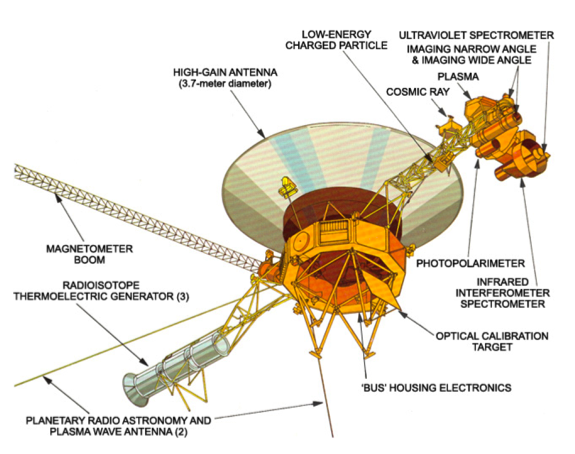
Planetary Radio Astronomy (PRA) & Plasma Wave Subsystem (PWS)
The Voyager Plasma Science experiment consists of four modulated Grid Faraday Cups, three (A, B, C) of which are positioned about the Telemetry Antenna Axis and generally point toward the Earth with the fourth (D) at a right angle to this direction. Ion currents are sampled simultaneously in all four cups, electrons in the D-cup only. The instrument has an energy/charge range of 10-5950 V. Data is taken in four ways, high and low resolution ion modes and high and low energy electron modes with energy resolution varying between 3.6 and 29%. The integration time for each energy channel can be varied; 0.21 s/channel is used at Jupiter and Saturn. Supersonic flow can be observed only when one of the detectors points within 45 degrees of the plasma velocity, subsonic flow is observed at all orientations. The current observations as a function of energy/charge allows determination of the plasma density, temperature, and velocity.
PLS Science Objectives
The objective of the Plasma Instrument is to characterize plasma conditions throughout the Voyager trajectory, in solar wind, during the planetary encounters, and in the interstellar medium.
References Helpful in Scoping the Mission
Mission Description
Spacecraft Description
Spacecraft Description
The PLS Data
Instrument Description - Also see Space Science Reviews 21 (1977-Issue 3) 259-287.
The Data are located at the PDS/PPI node.
The Data are located at the PDS/PPI node.
Publications - A listing of team members to facilitate literature searches.
 PDS: The Planetary Atmospheres Node
PDS: The Planetary Atmospheres Node


